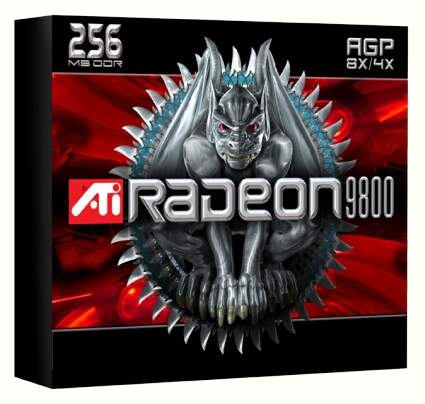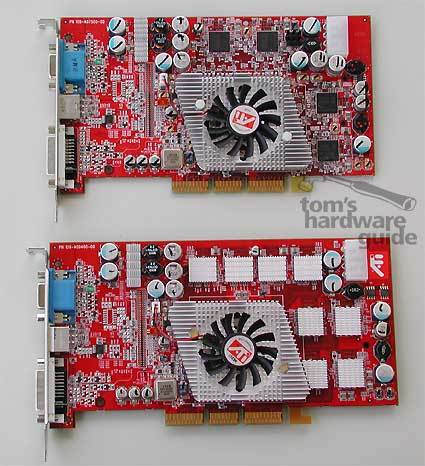Radeon 9800 256 MB
Introduction
At the launch of the R350 VPU (alias ATI Radeon 9800) at the beginning of the year, it was already clear that a 256 MB version would also be arriving on the market. And, as usual, the higher the numbers on the data sheets in the sales pamphlets, the more impressive the products seem to be, and the more eagerly anticipated. After all, this was why AMD introduced the new P-ratings with its CPUs: despite the lower clock speed, you still don't want to give the impression that you're slower than the competition from Intel.
Numbers are also important - at least for marketing. In practice, it looks completely different for the most part. Memory capacities grew by leaps and bounds with the graphics cards. It started with 4 MB, and then there was 8, 16, 32, 64 and, most recently, 128 MB. In the early days, you could directly use and benefit from the increased memory. It made higher gaming resolutions possible, and FSAA required more memory as well. However, the jump from 64 MB to 128 MB was initially a questionable matter. There were no applications that could take advantage of the increased memory. Only the most recent high-end cards, with their extremely fast chips and memory buses, could make use of this much memory. But the usage was limited, above all, to FSAA in the highest resolutions. 4x FSAA in 1600 x 1200 wouldn't have been possible with 64 MB. At the time, there weren't any games that could take full advantage of 128 MB.
The Radeon 9800 Pro 128 MB (above) and the new, 256 MB version.
And now, once again, we've come to the point where another upgrade is in sight. The memory size is to be doubled - from 128 MB to 256 MB. On paper, this looks impressive, but it's really not. You have to look extremely carefully to find situations where 256 MB brings advantages. What the old rule dictates is true: in games of the future, you're sure to need this at some point, but when that point will come is written in the stars. Even in our tests with the long-awaited Doom III with high quality settings (see...), the Radeon 9800 Pro 256 MB didn't show any advantages over the 128 MB variant.
If you were expecting the card to be faster clocked than the 128 MB version, you will be disappointed. The VPU runs at the same clock speed, only the memory is 10 MHz faster. However, this is an advantage that is countered by the slower latency times of DDR II. But more on that later.
If you ask ATI about the advantages to having more memory, you immediately get a key point thrown at you: high-res FSAA. What they mean by this is FSAA in the highest resolutions, higher than 1600 x 1200. With 256 MB, 2x and 4x FSAA, up to 2048 x 1536 is possible, and with 6x FSAA, up to 1920 x 1200 is possible. Also, there are only a few games and benchmarks for which the memory for 128 MB cards in 1600 x 1200 at 4x and 6x FSAA comes up short.
We'll explain what advantage more memory brings in practice, and what it doesn't. Next, however, we'll take a look at the card itself.
Get Tom's Hardware's best news and in-depth reviews, straight to your inbox.
Current page: Introduction
Next Page Radeon 9800 Pro 256 MB Vs. Radeon 9800 Pro 128 MB
